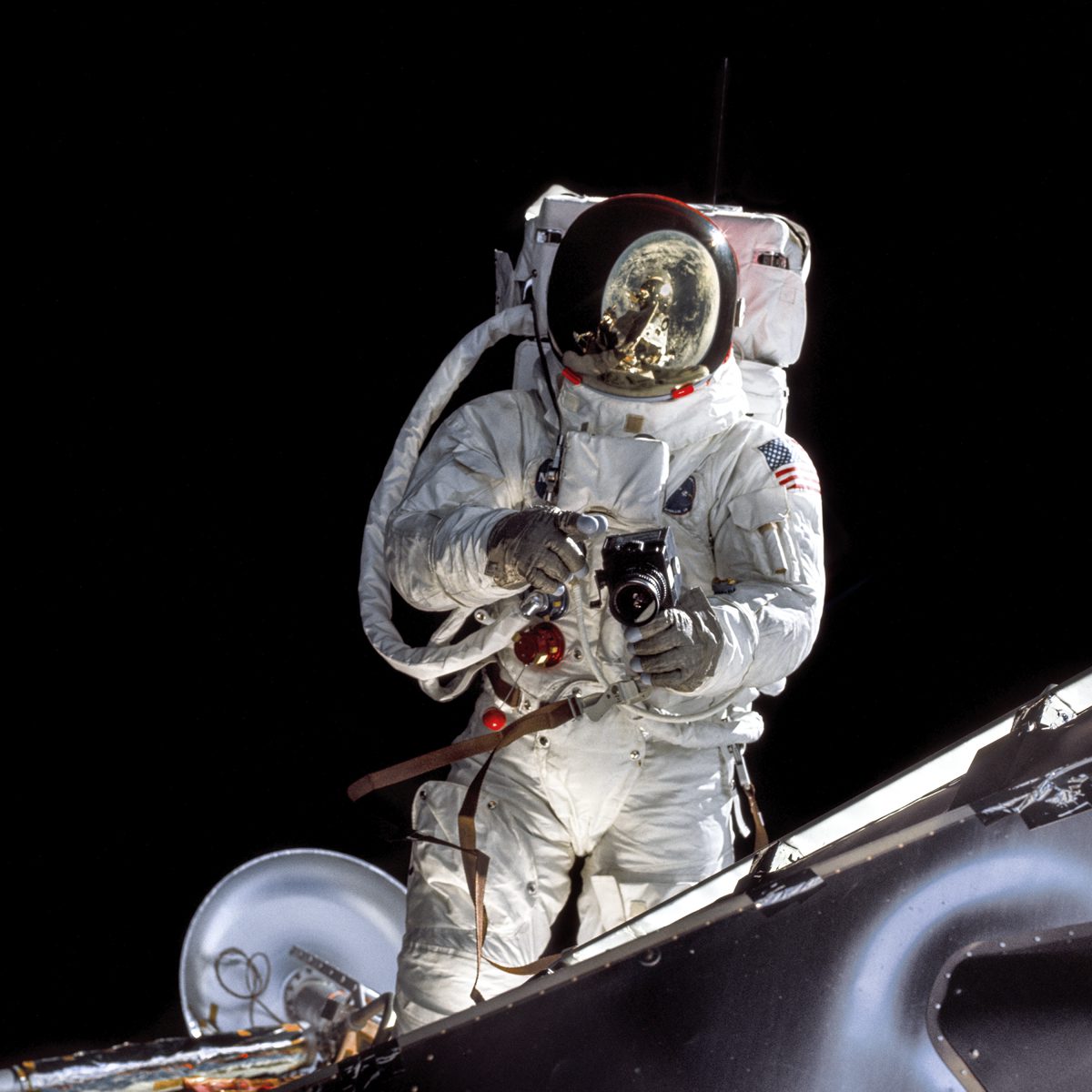In a frozen vault, under lock and key at the Johnson Space Center in Houston, Texas, sit 35,000 original photos from NASA’s historic Apollo Moon missions. For the first time in 50 years, these photos have been restored, pixel by pixel, to reveal these iconic images as we’ve never seen them before.
As we sit on the cusp of the first NASA mission to return to the Moon, with an eye to putting the first woman and person of color on the lunar surface, it’s not surprising that thoughts have turned towards the first time humankind visited our satellite. Now, thanks to the wizardry of photo restorer Andy Saunders, we can explore the Moon once again in unprecedented detail.
Collected together in a gorgeous new book, Apollo Remastered, Saunders – who is one of the world’s foremost experts of NASA digital restoration – has used cutting-edge techniques and skills to create the highest quality Apollo images ever produced. Now, we can experience spacewalks and Moon strolls as if we were there, as Apollo 16 astronaut Charlie Duke attests:
“Andy Saunders’s remastered images are so clear and real that they are the next best thing to being there. . . They are an exact representation of what I remember from my journey to the Moon on Apollo 16. These photos reveal very precisely what the Moon was really like.”
Apollo 9, March, 1969. Astronaut Russell Schweickart reflecting David Scott back at himself. Image credit: NASA/JSC/ASU/Andy Saunders
Nothing makes you feel smaller than seeing the whole world in a visor.
Gemini XXI, November, 1966. Buzz Aldrin takes the first selfie in space. Image credit: NASA/JSC/ASU/Andy Saunders
Buzz Aldrin walked so that Perseverance, Curiosity, and Zhurong could run.
Apollo 14, February, 1971. Edgar Mitchell photographs the landing site before leaving the Moon. Can you spot the golf balls? (top left). Image credit: NASA/JSC/ASU/Andy Saunders
It wasn’t just flags that were left on the Moon, items ranged from golf balls to family photos.
“Leaving the photo of the family on the surface was an emotional moment,” says Duke in the book of the family portrait he left on the Moon in 1972.
Apollo 16, April, 1972. On the back it says: “This is the family of Astronaut [Charlie] Duke from Planet Earth. Landed on the Moon, April 1972.” Image credit: NASA/JSC/ASU/Andy Saunders
When compared side by side, the restored detail is astonishing.
The details of this photo by Buzz Aldrin of just after Neil Armstong walked on the Moon reveal his eyes, red and teary, elated but exhausted. Image credit: NASA/Andy Saunders (Digital Source: Stephen Slater)
It seems incredible that in just a few short years we’ll be able to see what 50 years of technology might make of a scene like this. Are we set to get the first video of the surface of the Moon?
Apollo 17, December, 1972. Gene Cernan captures Harrison Schmitt peering into a crater. No one has walked on the Moon since. Image credit: NASA/JSC/ASU/Andy Saunders
In December this year, it will be 50 years since humans last walked on the Moon and we got shots like this. In the next decade, we can look forward to not only new spectacular photos from the surface of the Moon, but the technical wizardry of people like Saunders on the ground, who make us feel like we are there with them.
Source Link: Incredible Remastered Apollo Moon Photos Reveal Details Like We’ve Never Seen
